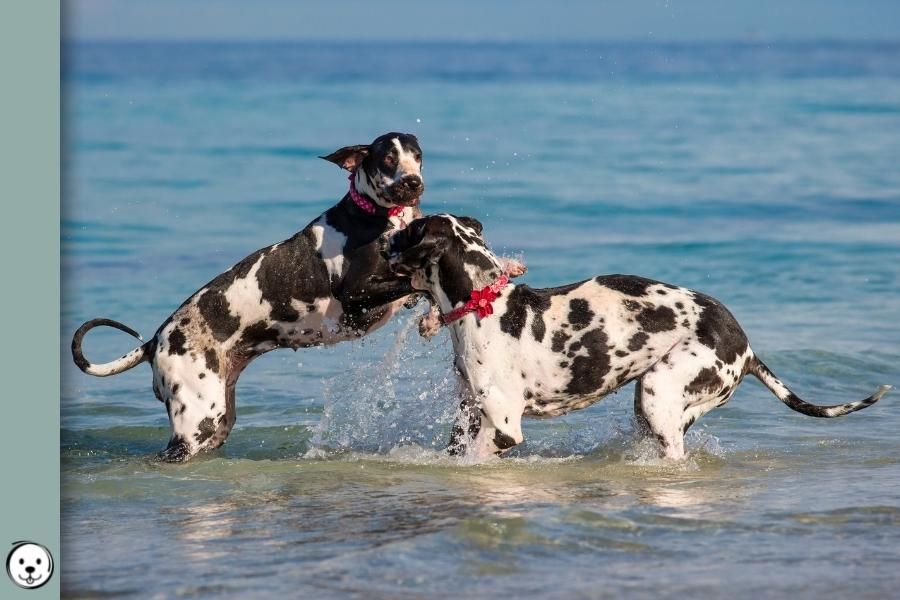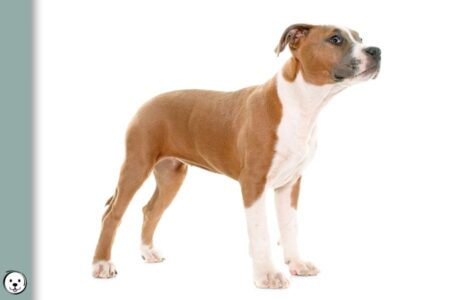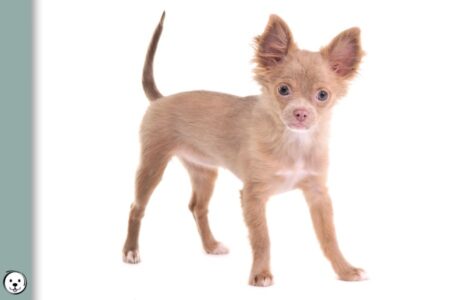The Harlequin-Locus in Great Danes acts as a merle modifier. Harlequin turns the semi-random patches with reduced eumelanin found in merle patterns to white. This creates a white base color with dark irregular patches that match the dog’s regular pattern.
Harlequin is not the same as harlequin merle (Mh)!
Content
What is Harlequin in Great Danes?
What exactly is harlequin?
The standard color for harlequin Great Danes is described as white with well-distributed grey or black torn patches (AKC), pure white underground with black or blue patches (KC) or white with black splashed patches (FCI).
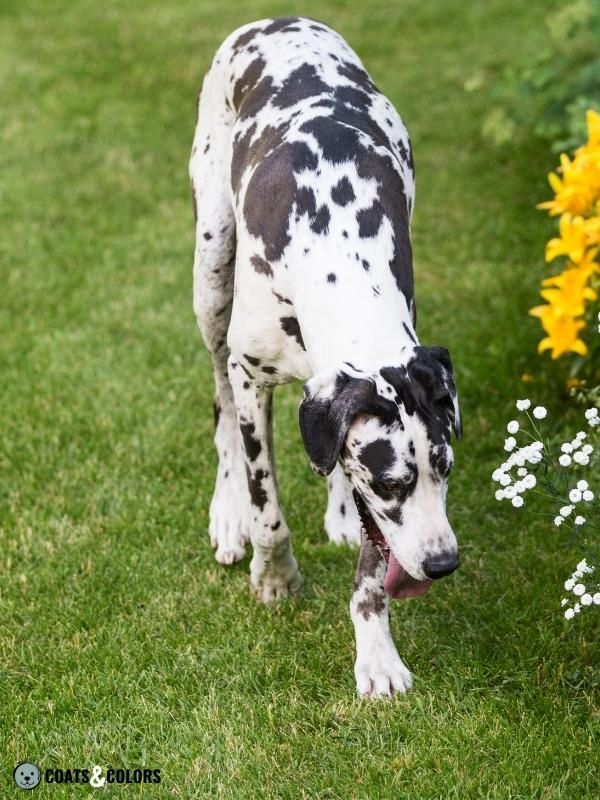
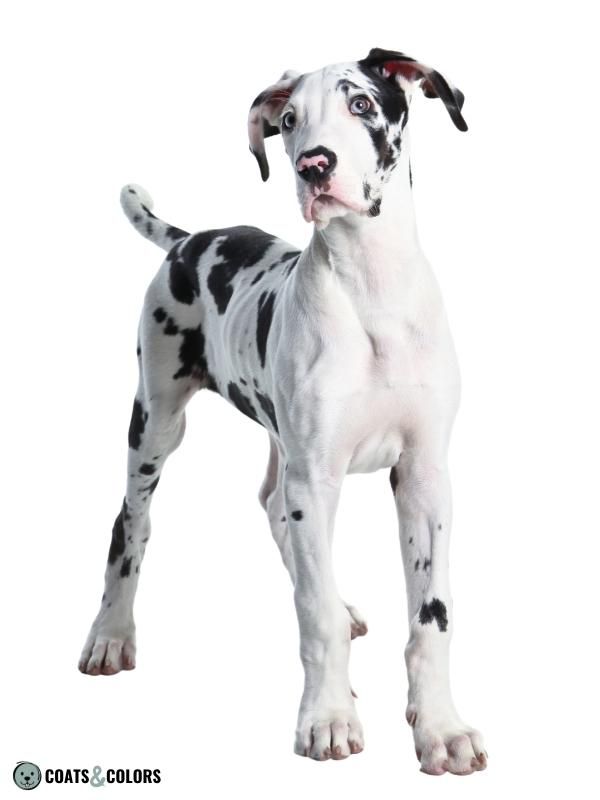
Harlequin only affects dogs that express a merle pattern (H/h M*/-).
Without being merle (H/h m/m) a dog can’t produce a harlequin pattern.
Merle by itself reduces eumelanin in some areas and creates semi-random patches with diluted color.
The harlequin modifier increases the size of dark patches but removes all pigment in between those patches so the base color turns to solid white. Sometimes some ticking or single black hairs will grow in the white base color.
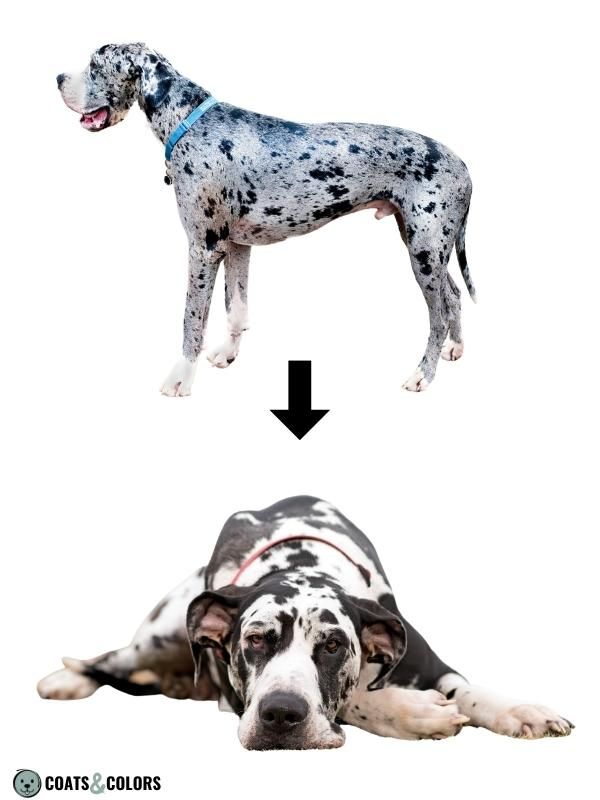
Not all dogs with a merle variant and a H allele will be visual harlequins.
Dogs need a merle allele long enough to actually produce merling for harlequin to express. Proper harlequin will only show up in Ma+/m or M/m dogs. With Mh/m it’s a mixed bag, as this variant can sometimes produce minimal merle, where only the smallish merled areas can express harlequin.
Even black merle + harlequin dogs are not always only black and white with small patches.
Some dogs can have pretty large harlequin patches. And even some dilute patches with a more grey or brownish shade are normal although purely black and white dogs are preferred by breeders.

Not all of the affected dogs are bred from solid black Great Danes, combinations with other colors and patterns can create different porcelain or Porzellantiger colorations:
On a blue Great Dane with diluted pigment and merle, all the harlequin patches will be blue which is called blue harlequin.
Harlequin not only affects eumelanin (black pigment), unlike merle it also has an effect on phaeomelanin (yellow pigment).
On a sable merle, only the black hair tips or a black mask would normally be affected by merle. But harlequin can create a white dog with torn sable patches known as fawnequin.
A brindle merle would normally only have irregular brindle striping but the harlequin modifier again can create a white base coat with torn brindle patches known as brindlequin.
Since harlequin dogs are all merle with added pigment deletion blue wall eyes, pink noses or butterfly noses are pretty common.
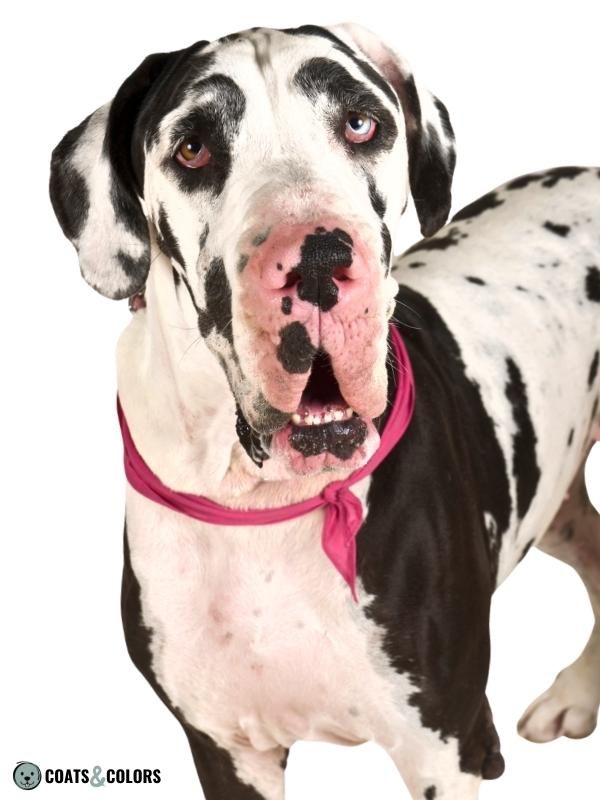
The H Allele
The mutation causing harlequin was found in the PSMB7 gene (Proteasome subunit beta type-7) on dog chromosome 9[3].
Interestingly, the tiny Yorkshire Terrier is another breed carrying this mutation! But since Yorkies traditionally don’t come in merle there is no pattern that harlequin could modify[2].
Harlequin is an autosomal dominant mutation and also a homozygous lethal trait. Every carrier or affected dog is heterozygous (H/h) since homozygous dogs (H/H) will not be born.
This is the dominance hierarchy of alleles at the Harlequin locus:
There are only 3 possible allelic combinations at this gene.
- H/H: Embryonic lethal
- H/h: Harlequin pattern if combined with Merle
- h/h: No Harlequin pattern
Since all dogs with a harlequin coat are merle and the H/H genotype is not viable we know that every dog with this pattern is H/h M*/-. And we know that every regular merle Great Dane without the harlequin pattern is h/h at the H-Locus.
Harlequin and merle are different traits that are inherited separately.
To produce a harlequin pattern at least one parent must be H/h and at least one parent must give merle M*/-. Dogs without a merle pattern can still be harlequin carriers (H/h m/m).
A potentially reduced litter size is not the only reason to best never to breed from two phenotypically harlequin Great Danes (H/h M*/m). All dogs with a harlequin pattern are also merle so breeding these dogs together can produce puppies with a double merle (M*/M*) phenotype!
For the same reason, a harlequin dog (H/h M*/m) should not be bred to a merle dog (h/h M*/m).
H Locus Calculator
This simple tool can help you predict different H Locus combinations:
Harlequin Pattern in Great Danes
Harlequin removes pigment from a dog’s color pattern. It creates pigmented patches on a white background. But the actual pattern depends on the dog’s other color traits.
Mantle Harlequin
White spotting can create areas without any pigment as seen in mantle patterns.
On a dog with a harlequin mantle pattern, a white chest, collar, belly, tail tip, or legs are just not as obvious because of all the additionally deleted background pigment.
Black Harlequin
The desired standard color is harlequin on a black merle pattern creating a black and white dog (H/h M*/- KB/- D/-). To produce a dog with evenly distributed patches this pattern is bred from solid black dogs.
Almost solid white dogs with only very few black spots might in some cases be double merle with harlequin (H/h M*/M* KB/- D/-).
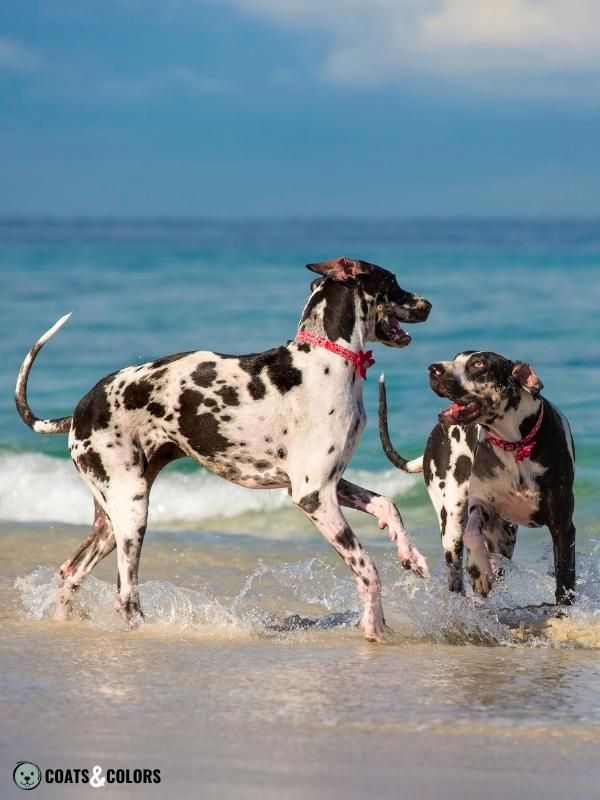


Blue Harlequin
In blue Great Danes, all the eumelanin is diluted to blue. So on a bluequin dog all the colored patches will not be black but blue (H/h M*/- KB/- d/d).
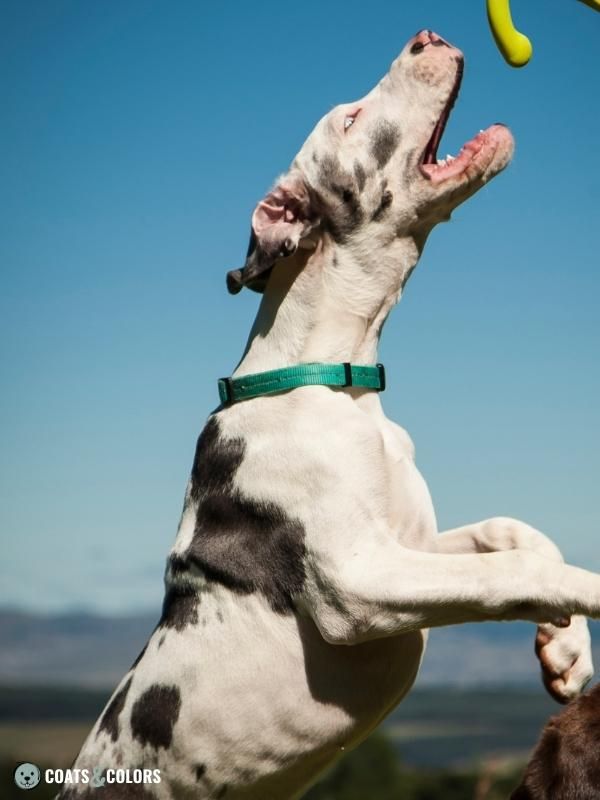

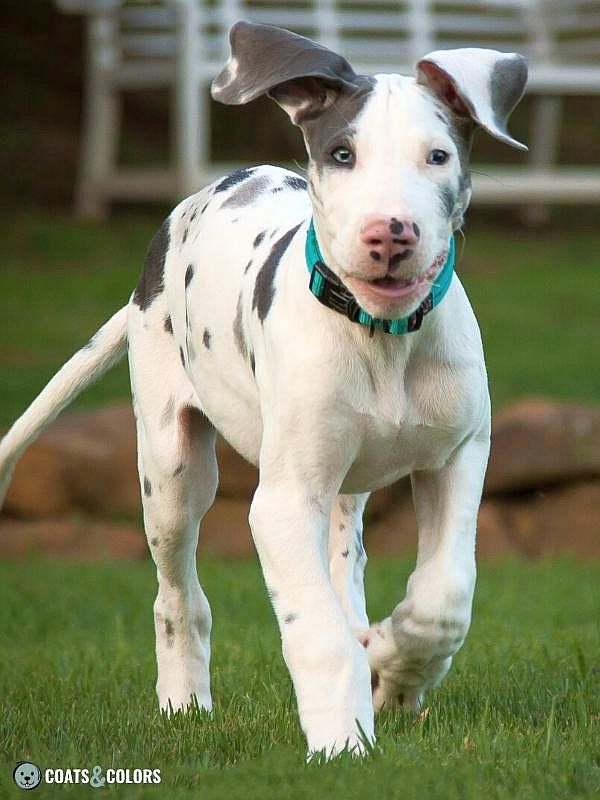
Fawnequin
This white coat with yellow patches is the result of merle and harlequin affecting a fawn coat (H/h M*/- ky/ky Ay/Ay D/-). Even blue fawnequin is rare but possible (H/h M*/- ky/ky Ay/- d/d)
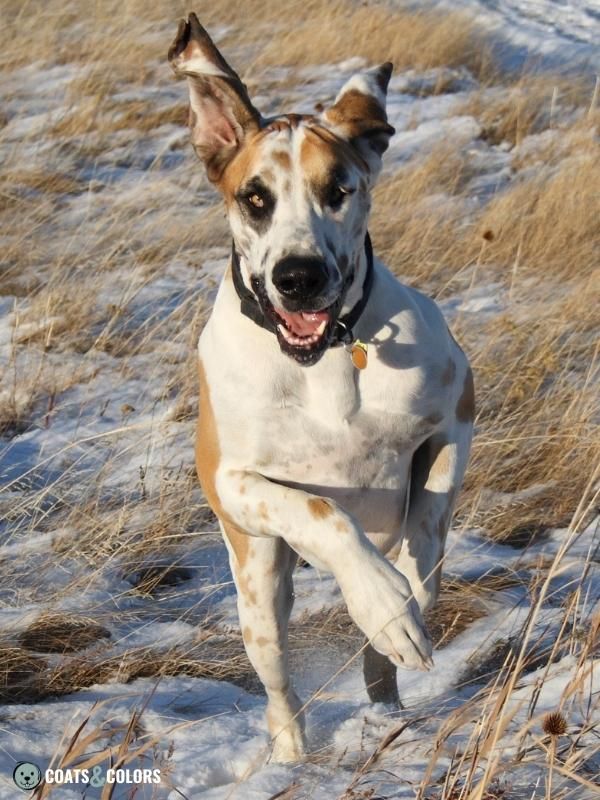

Brindlequin
Brindlequin (H/h M*/- kbr/– Ay/Ay D/-) or blue brindlequin (H/h M*/- kbr/- Ay/Ay d/d) creates a white base color with striped patches all over the dog.
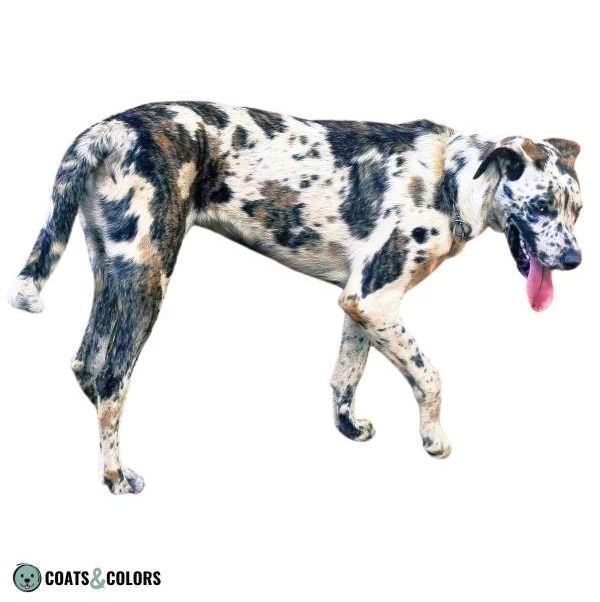
Look-Alikes: Merlequin and Tweed Merle
Dogs that still have regular merle patches on a white background are not really harlequin!
If they produce typical merle patches that are grey with black hairs and mottles they are in most cases merle with white spotting (h/h M*/– sP/sP) or double merle (h/h M*/M*) or both.
Because this creates a similar pattern to harlequin these dogs are sometimes called merlequin which is a somewhat misleading term since harlequin isn’t actually involved.
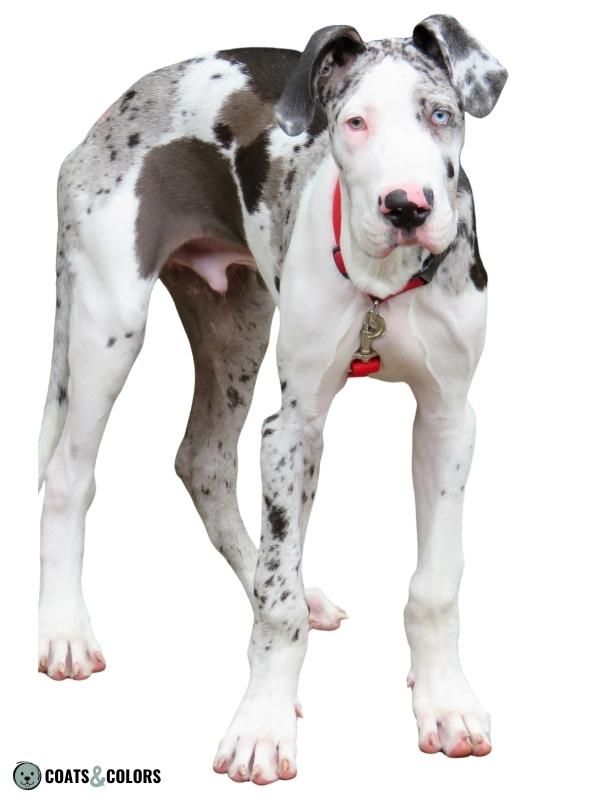
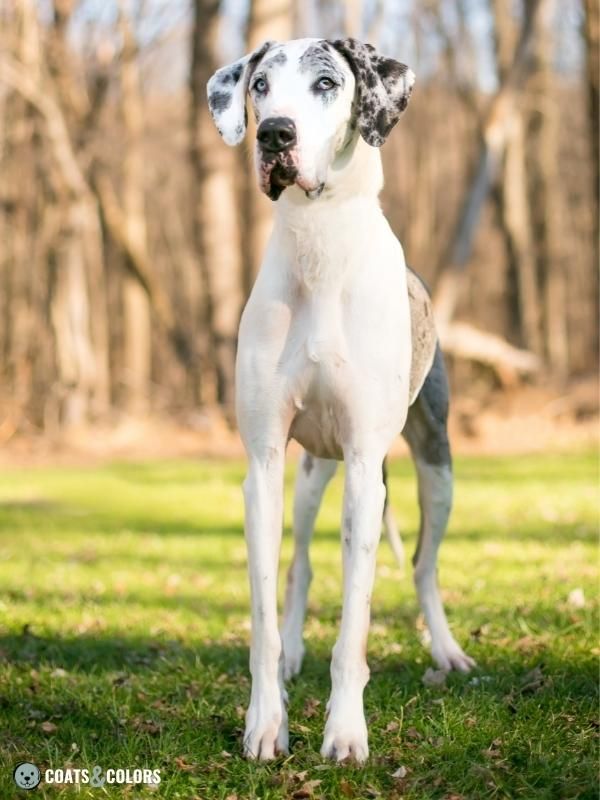
Another possible explanation for dogs with large black, grey and white patches might be longer merle variants like Mh or combinations of merle variants (e.g. M/Ma).
These versions of merle are rare in Great Danes but can produce a tweed merle or harlequin merle (not to be confused with H-Locus harlequin) pattern. They express with large areas where pigment got deleted to white or they can have a combination of pretty big merled, black, and white patches.

Learn More
Links
[1] Sponenberg DP. Inheritance of the harlequin color in Great Dane dogs. J Hered. 1985 May-Jun;76(3):224-5. PMID: 3998446. https://doi.org/10.1093/oxfordjournals.jhered.a110079
[2] Dreger DL, Hooser BN, Hughes AM, Ganesan B, Donner J, Anderson H, et al. (2019). True Colors: Commercially-acquired morphological genotypes reveal hidden allele variation among dog breeds, informing both trait ancestry and breed potential. PLoS ONE 14(10): e0223995. https://doi.org/10.1371/journal.pone.0223995
[3] Leigh Anne Clark, Kate L. Tsai, Alison N. Starr, Keri L. Nowend, Keith E. Murphy. A missense mutation in the 20S proteasome β2 subunit of Great Danes having harlequin coat patterning. Genomics. Volume 97, Issue 4, 2011. https://doi.org/10.1016/j.ygeno.2011.01.003

Hi! I’m Steffi. I am a biologist and a big time dog nerd. You are curious about coat color genetics? You’ve come to the right place! Read more.

